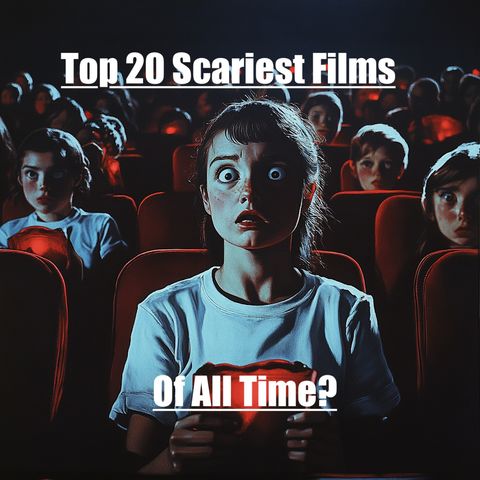Screams Through Time: The Evolution of Horror Cinema by Decade Horror cinema has been terrifying audiences for over a century, evolving with each passing decade to reflect societal fears, technological advancements, and changing artistic sensibilities. From the silent era to the present day, let's take a chilling journey through time to explore how the genre has transformed, highlighting key films that have defined or redefined horror in each era. 1920s: The Birth of Movie Monsters The 1920s saw the rise of German Expressionism and the birth of iconic movie monsters. "The Cabinet of Dr. Caligari" (1920) set the stage with its distorted sets and psychological terror, while "Nosferatu" (1922) introduced one of cinema's most enduring vampires. In Hollywood, Lon Chaney Sr. became the "Man of a Thousand Faces" with his portrayals in "The Phantom of the Opera" (1925) and "London After Midnight" (1927). These films established horror as a viable genre and showcased the power of visual storytelling in creating fear. 1930s: Universal Monsters and the Talkies With the advent of sound, horror found its voice. Universal Studios dominated the decade with its classic monster movies. "Dracula" (1931) and "Frankenstein" (1931) launched a franchise that would define horror for a generation. "The Mummy" (1932) and "The Invisible Man" (1933) further expanded Universal's monster roster. These films established many of the tropes we associate with classic horror and demonstrated the genre's ability to create sympathy for its monsters. 1940s: The Wolf Man and Val Lewton The 1940s saw the completion of Universal's classic monster lineup with "The Wolf Man" (1941). However, it was producer Val Lewton who pushed the genre in a new direction. Lewton's films, including "Cat People" (1942) and "I Walked with a Zombie" (1943), emphasized psychological terror and shadowy atmospherics over explicit monsters, influencing generations of filmmakers to come. 1950s: Sci-Fi Horror and Hammer Films The atomic age and Cold War tensions gave rise to science fiction-infused horror. "The Thing from Another World" (1951) and "Invasion of the Body Snatchers" (1956) played on fears of the unknown and infiltration. Meanwhile, Britain's Hammer Film Productions revived classic monsters in vivid color. "The Curse of Frankenstein" (1957) and "Horror of Dracula" (1958) brought a new level of gore and sensuality to horror. 1960s: Psychological Terror and the Modern Monster Alfred Hitchcock's "Psycho" (1960) ushered in a new era of psychological horror, while "Rosemary's Baby" (1968) brought satanic terror to modern-day New York. George A. Romero redefined the zombie genre with "Night of the Living Dead" (1968), infusing horror with social commentary. Meanwhile, "Carnival of Souls" (1962) showcased the potential of low-budget, atmospheric horror. 1970s: The Golden Age of Horror The 1970s are often considered a golden age for horror, with numerous influential films pushing boundaries. "The Exorcist" (1973) brought demonic possession into the mainstream, while "Halloween" (1978) set the template for the slasher subgenre. "The Texas Chain Saw Massacre" (1974) shocked audiences with its gritty realism, and "Alien" (1979) proved that horror could work in any setting, even outer space. 1980s: Slashers, Practical Effects, and Horror-Comedy The slasher boom continued with franchises like "Friday the 13th" (1980) and "A Nightmare on Elm Street" (1984). Practical effects reached new heights in films like "The Thing" (1982) and "An American Werewolf in London" (1981). Horror-comedy found its footing with "Evil Dead II" (1987) and "Gremlins" (1984), while "Hellraiser" (1987) brought a new level of sophistication to supernatural horror. 1990s: Postmodern Horror and J-Horror "Scream" (1996) revitalized the slasher genre with its self-aware approach, spawning numerous imitators. "The Blair Witch Project" (1999) popularized the found footage subgenre. Meanwhile, Japanese horror (J-horror) gained international attention with films like "Ringu" (1998), influencing horror aesthetics worldwide. 2000s: Torture Porn and Remakes The 2000s saw the rise of the so-called "torture porn" subgenre with films like "Saw" (2004) and "Hostel" (2005). It was also the decade of remakes, with new versions of classic horror films like "The Texas Chainsaw Massacre" (2003) and "Dawn of the Dead" (2004). Innovative films like "The Others" (2001) and "The Descent" (2005) proved there was still room for original, atmospheric horror. 2010s: Elevated Horror and Shared Universes The 2010s saw the rise of what some call "elevated horror" - films that blend arthouse sensibilities with horror elements. Examples include "The Babadook" (2014), "It Follows" (2014), and "Hereditary" (2018). The decade also saw the creation of horror shared universes, most notably "The Conjuring" universe, starting with the first film in 2013. Jordan Peele's "Get Out" (2017) showcased horror's potential for social commentary, winning an Oscar for Best Original Screenplay. 2020s: Pandemic-Era Horror and Beyond As we move into the 2020s, horror continues to evolve. The COVID-19 pandemic has already influenced films like "Host" (2020), shot entirely on Zoom. Films like "The Invisible Man" (2020) and "A Quiet Place Part II" (2021) demonstrate that classic horror concepts can still feel fresh with the right approach. The future of horror looks bright (or should we say dark?), with filmmakers continuing to find new ways to terrify audiences. Conclusion: The Eternal Appeal of Horror From the shadows of German Expressionism to the computer-generated scares of today, horror cinema has constantly reinvented itself while maintaining its core appeal: the thrill of being scared in a safe environment. Each decade has brought new fears to explore, new technologies to exploit, and new storytelling techniques to master. Yet, the best horror films, regardless of their era, tap into timeless human fears and anxieties. As we look to the future of horror cinema, one thing is certain: as long as there are shadows to jump at and things that go bump in the night, there will be filmmakers ready to turn our fears into unforgettable cinematic experiences. So, whether you're a fan of classic monster movies, slasher flicks, psychological thrillers, or whatever nightmares the future of cinema might bring, remember: the next great scare is just a screening away. Keep the lights on, horror fans – the show's not over yet!
show less

